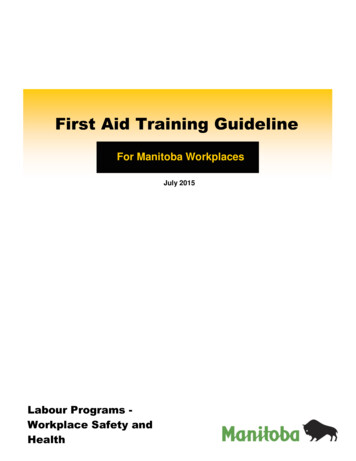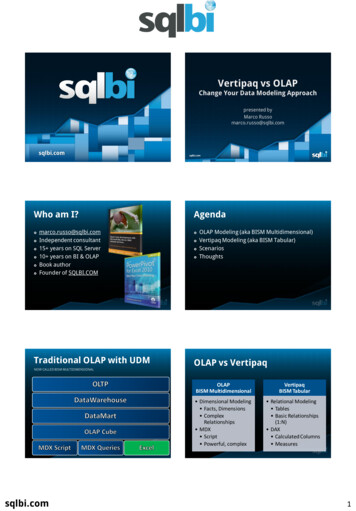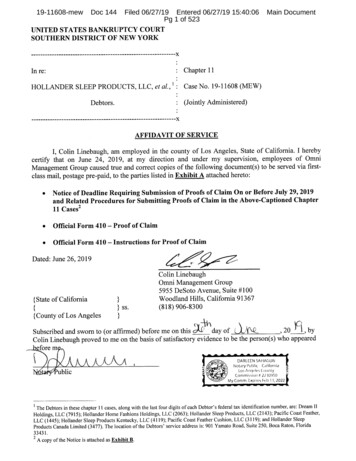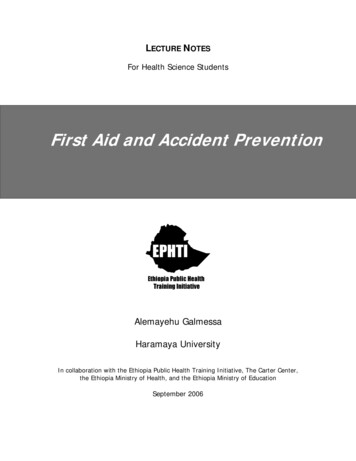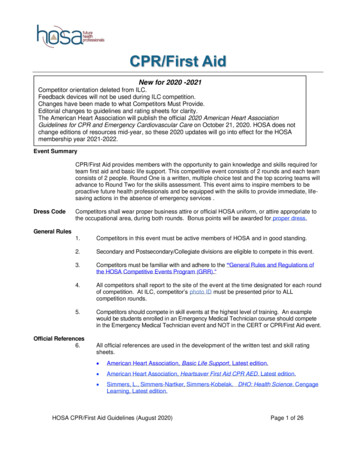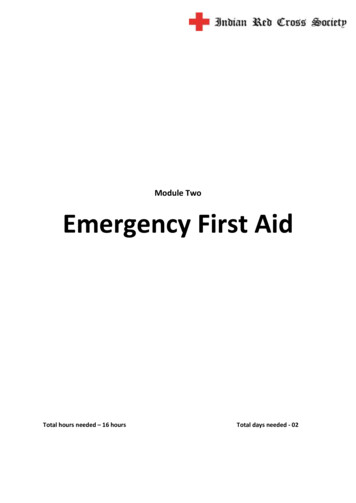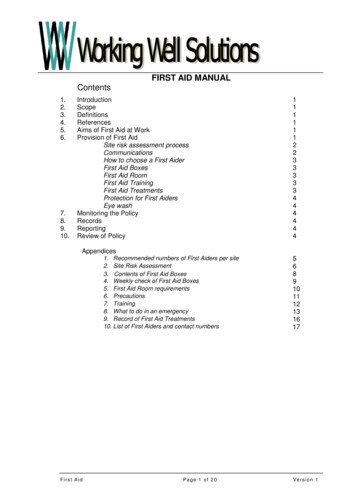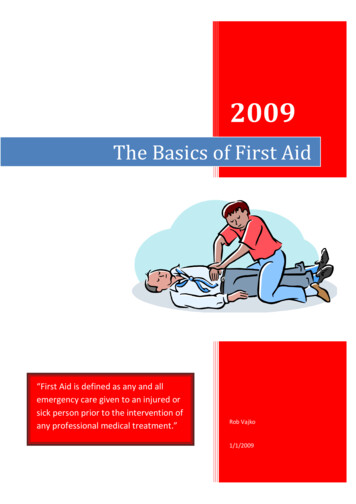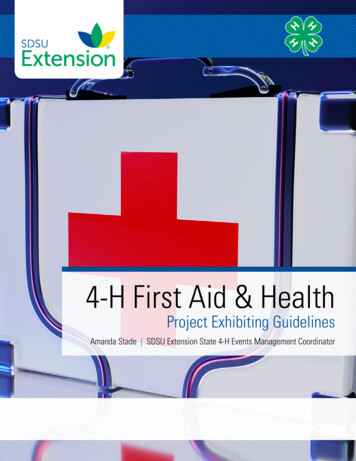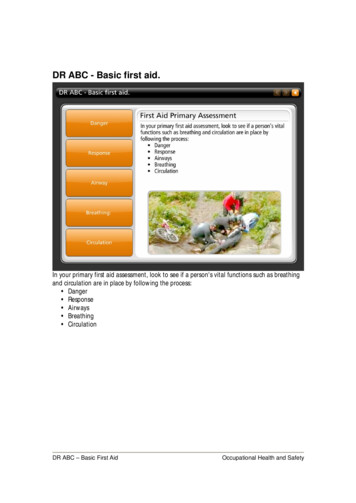
Transcription
DR ABC - Basic first aid.In your primary first aid assessment, look to see if a person's vital functions such as breathingand circulation are in place by following the process: Danger Response Airways Breathing CirculationDR ABC – Basic First AidOccupational Health and Safety
DangerLook around and use your senses to see if there is danger to yourself, the casualty orbystanders. If there is, you will need to deal with the danger first or more injuries can occur.If possible move: the danger away from the casualty the casualty away from the dangerIf you cannot do this, you will need to stand back and wait for help. This can sometimes be atough decision, but it is important that you do not become a victim yourself.DR ABC – Basic First AidOccupational Health and Safety
ResponseTo check three different types of responses, gently shake the persons shoulders (just touch fora child or baby) and say; "Hello, can you hear me? Are you OK?" "Can you open your eyes?" "Can you squeeze my hands?"No Response - shout or send for help.Response - place in recovery position - place their near leg at 45º and put their near armacross their chest. Place their far arm at a 90º angle to their body and then slowly roll themover supporting their head.DR ABC – Basic First AidOccupational Health and Safety
AirwayYou cannot breath without a clear airway. So this is important to check. To check the airwayopen their mouth and look for obstructions. If something you can see, like gum or vomit isblocking their airway, try and remove it.NOTE: The Australian Resuscitation Council recommends checking the airway with the personstill lying on their back rather than being turned on their side to check the airway. This isdifferent from previous advice, but is now official policy.DR ABC – Basic First AidOccupational Health and Safety
Breathing:Look, listen and feel for normal breathing: Look for the chest rising Listen for sounds of breathing Feel for chest rise and exhaled breathThe nose of children and babies should also clear.If the casualty IS breathing but they are UNCONSCIOUS, place them in the recovery position.If the casualty is not breathing normally, dial 000 - then start EXPIRED AIR RESUSCITATION.(Watch video)DR ABC – Basic First AidOccupational Health and Safety
CirculationTo check circulation, look for signs of life including colour, movement and pulse. TheCAROTID pulse is found by placing two fingers to the groove in the side of the neck. Presslightly and feel for the pulse.If the patient does have signs of circulation but IS NOT breathing, perform EXPIRED AIRRESUSCITATION.If the casualty DOES NOT have signs of circulation and IS NOT breathing, perform CARDIOPULMONARY RESUSCITATION (See video)DR ABC – Basic First AidOccupational Health and Safety
DR ABC – Basic First Aid Occupational Health and Safety Danger Look around and use your senses to see if there is danger to yourself, the casualty or bystanders. If there is, you will need to deal with the danger first or more injuries can occur. If possible move: the danger a
